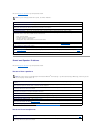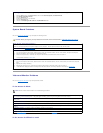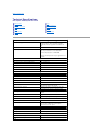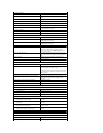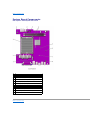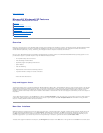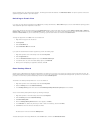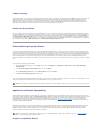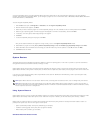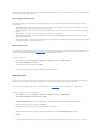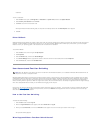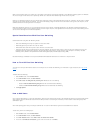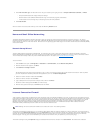
Taskbar Grouping
The Windows taskbar is a row of buttons that typically displays across the bottom of the screen. The taskbar includes the Start menu button and a button for
each open application. (The taskbar also includes the Quick Launch icons and the notification area.) Windows XP groups multiple instances of the same
application on the taskbar. For example, if six instances of Internet Explorer are open, each displaying a button on the taskbar, Windows XP groups the
buttons next to one another on the taskbar. If space becomes an issue on the taskbar, Windows XP consolidates all the Internet Explorer buttons into a
single button. When clicked, that button expands to a menu of the six Internet Explorer active sessions.
Notification Area Cleanup
Over time, software icons tend to proliferate in the notification area, the area in the bottom right corner of the Windows desktop. Windows XP detects when
icons in the notification area are not being accessed and hides them. A caret, or chevron, button indicates that there are hidden icons that can be viewed by
selecting the button. You can also configure the notification area manually by right-clicking the taskbar, selecting Properties, and then clicking Customize... in
the Taskbar and Start Menu Properties window. For example, you may choose to hide the antivirus program icon because it is rarely accessed, but display
the audio volume icon because it is used frequently. The notification area cleanup feature is automatically enabled when the operating system is installed, but
you may disable it by unchecking Hide inactive icons in the Taskbar and Start Menu Properties window.
Files and Settings Transfer Wizard
The Files and Settings Transfer Wizard is used to migrate personal files and settings from one computer to another (for instance, when upgrading to a new
computer). Personal files include the documents, images, spreadsheets, presentations, and e-mail messages on your computer. User settings include display
properties, window sizes, toolbar settings, dial-up connections, Internet bookmarks, and so forth on your computer. The Files and Settings Transfer Wizard is
run on a source (old) computer to collect the data and is run again on the destination (new) computer to import the data. If the old computer is using an
earlier operating system, the wizard can be launched either from the Windows XP CD or from a diskette created on the new Windows XP computer. You
transfer the data to the new computer over a network or direct serial connection, or store it on a removable medium such as a floppy disk, Zip disk, or writable
CD.
To use the Files and Settings Transfer Wizard:
1. On the new Windows XP computer, click the Start button, point to All Programs—> Accessories—> System Tools, and click Files and Settings
Transfer Wizard.
2. On the Files and Settings Transfer Wizard welcome screen, click Next>.
3. On the Which computer is this? screen, select New Computer, and then click Next>.
4. The Do you have a Windows XP CD? screen appears.
The Files and Settings Transfer Wizard guides you through the steps necessary to transfer user settings, personal files, or both to the new computer. If a CD
drive is not available, the wizard allows you to create a wizard diskette to run on your old computer.
Application and Device Compatibility
Although Windows XP is designed to be compatible with a wide range of application programs and hardware devices, some older programs and devices may
not be usable. Check the Microsoft website at www.microsoft.com for application programs and hardware devices known to be compatible. When buying new
software and devices, look for those that are labeled as ready for Windows XP. If you encounter problems using an application program designed for an
earlier Windows operating system, Windows XP provides a compatibility mode feature (see "Program Compatibility Wizard"). If you are unsuccessful at
installing application programs or hardware devices designed to operate on earlier Windows operating systems, contact the manufacturer of the product for
information or updates for Windows XP.
Windows XP also includes a new technology that addresses the problems sometimes encountered on previous operating systems with Windows application
programs that, when installed, replace current versions of certain Windows files with older versions. This situation can cause problems with the newer
application programs, which rely on the replaced files. To eliminate this problem and improve operating system stability, Windows XP manages multiple
versions of files and invokes the correct version required by a program.
Program Compatibility Wizard
NOTE: The time required to collect and transfer data depends on the amount of data collected. Times can vary from just a few minutes to several hours.
NOTE: If you experience problems with your operating system or other applications after performing an installation, you can use System Restore to
return your computer to a previous stable condition.



